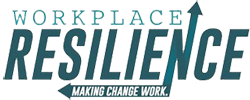 I have a friend that struggles to stay positive. Whatever happens in her life, she imagines the worst possible scenario. She has difficulty accepting that her situation is often just temporary and that it’s possible for things to turn around and improve. Frankly, she thinks people that who are optimistic are just kidding themselves. Her belief is that in real life, things don’t work out the way you want.
I have a friend that struggles to stay positive. Whatever happens in her life, she imagines the worst possible scenario. She has difficulty accepting that her situation is often just temporary and that it’s possible for things to turn around and improve. Frankly, she thinks people that who are optimistic are just kidding themselves. Her belief is that in real life, things don’t work out the way you want.
Do you know anyone with this perspective on life?
Elizabeth Tenney, a Professor of Business Management at the University of Utah, was curious about the role that optimism played in the workplace. What she found surprised her. Her research concluded that optimism didn’t help a person improve their performance as much as she had initially thought. However, the research revealed that having optimism helped individuals to stick with an arduous task and persevere. As you can imagine, this would be an important quality to possess in the workplace.
A show of hands please— how many of you would like to spend your workday surrounded by pessimistic colleagues? How about optimistic colleagues? That’s what I thought.
Martin Seligman, who has done vast research surrounding this topic, explains 0ptimism as the ability to always view the positive side of the situation. No matter how dark and discouraging things look, an optimistic individual has the ability to see the upside and know that things will work out. Pessimists have difficulty seeing the upside of any situation that exists in their life. They assume that things will stay bad forever. Optimists, on the other hand, view their current situation as only temporary. Deep down, they believe that things will improve soon and it only takes some patience to wait it out.
In today’s world, the workplace can be stressful. Whether you’re working in a corporate environment, or as an entrepreneur, the expectations and rules to succeed are constantly changing and evolving. Your ability to ride the wave through the good times and bad is essential to your success. Having an optimistic perspective enables you to see the possibilities and be creative in your problem solving.
Your ability to be resilient is the key ingredient to you and your workers achieving your goals.
There are going to be good days and bad days at the job— sometimes you’ll just want to give up. However, you must learn to persevere and drown out the distracting noise around you. Sometimes the most distracting noise is happening right inside your own head. I’m here to tell you that it’s possible to retrain your brain. With practice, you can learn to view these times as temporary setbacks that will soon turn around. If you’re determined to change, you can become a much more optimistic person.
I’m quite optimistic that things can change for you.



